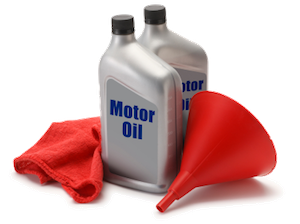home | e-mail | terms of use
oilspecifications.org
The SAE 16 Viscosity Grade
On April 1, 2013 the Society of Automotive Engineers (SAE) introduced a new viscosity grade called SAE 16. This is a new high temperature viscosity grade hence it's not 16W just simply 16 or SAE 16. This is the lowest high temerature SAE engine oil viscosity grade yet, replacing SAE 20 in this role. The introduction of this viscosity grade is another step towards motor oils providing better and better fuel economy and such oils will most likely to be first recommended by companies that emphasize fuel economy oils (e.g. Ford, Honda).
When the first SAE 16 oils will appear (likely as 0W16 and 5W16 oils) they will only be suitable to be used in vehicles where the engine is designed to operate with such a low viscosity oil. Just as 5W20 and 0W20 oils these oils will also be unsuitable to be used in older engine designs since it would not provide sufficient wear protection on operating temperature.
The number 16 itself does not have a special meaning it does not point at any specific oil property, it is only the name of the viscosity grade. SAE decided to choose a number that breaks the must-be-divisible-by-5 rule to avoid any mix-up with the winter viscosities. SAE 15 would have been easy to confuse with 15W (even though the very same problem did not influence SAE's decision when SAE 20 was introduced).
With the introduction of SAE 16 the limit on 100 °C viscosity for SAE was changed from 5.6 cSt to 6.9 cSt minimum. SAE 20 oils didn't make use of this interval so far and the limits for SAE 16 partially extend to this segment. For an oil to be of SAE 16 viscosity grade its viscosity on 100 °C must be between 6.1 and 8.2 mm2/s and its HTHS viscosity must be at least 2.3 mPa*s.
The official SAE viscosity grades are now 0W, 5W, 10W, 15W, 20W, 25W, 16, 20, 30, 40, 50 and 60. SAE is considering introducing the 12, 8 and 4 viscosity grades when there will be demand by the car manufacturers. This also outlines the likely direction of the lubricant development: oils will become ever thinner but their advanced chemistry must make sure that they still provide the same or better protection as their older, thicker counterparts did.


